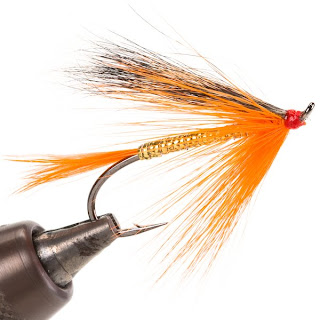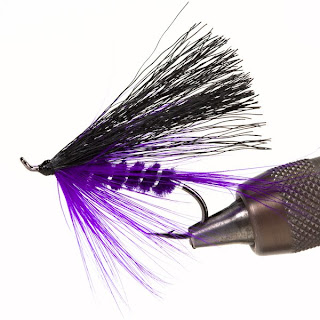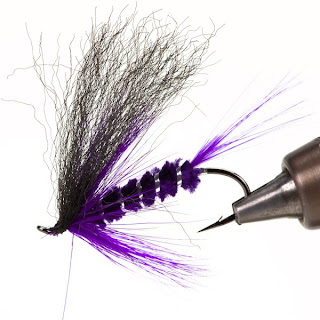In the art of fly tying, it's always a gas to breathe new life to an old standard (even if you don't play much with the recipe at all). That's what Ian McNemar has done with The Golden Demon, a traditional salmon and steelhead fly pattern that originated in England probably around the turn of the 20th Century.
Ian has recently been inspired by John Shewey's brilliant work on steelhead fly tying, and he's been burning through the book, tying pattern after pattern. Steelhead flies are enticing to the modern aesthetic for their restrained use of material and their clean and graceful geometries.

The history of The Golden Demon is that of a well-traveled fly. Fly fishing author and historian, Dick Surette, explains:
"The Golden Demon is probably the most used fly on Black Lake and in the Connecticut Lakes area of N.H. This fly has an interesting and well-traveled background. The fly was originated in England and brought to New Zealand where Zane Grey use it in the 1920's. He then brought some flies back to the West Coast for steelhead and salmon. Then the fly appeared on the salmon rivers of New Brunswick, especially on the Cains River. From New Brunswick the pattern filtered down to the area northern New Hampshire in the early 1930's and has been a most popular pattern in that area ever since. The orange throat is supposed to be the color that is repulsive to demons and is tied in several variations such as the Silver Demon and Black Demon" (Trout and Salmon Fly Index).

Remarkably, the design has gone through very few changes through the course of its travel and continues to be one of those "top producers" fly shop junkies love to chew on about for hours with their fly fishing and tying compatriots.
Today, The Golden Demon is quite effective in the Atlantic salmon water of North America's rocky northeastern coast, and is a killer pattern in the Pacific Northwest. It's sparse dressing style and bright colors are perfect for a fall trip to the Deschutes River in Central Oregon, and it was probably the foundational pattern for the Fall Favorite, another popular fly design used throughout the Pacific Northwest on steelhead and salmon.
Evan LeBon is a regular contributor to beyondthebug.com
flies and photos provided by Ian McNemar, a regular contributor to beyondthebug.com









